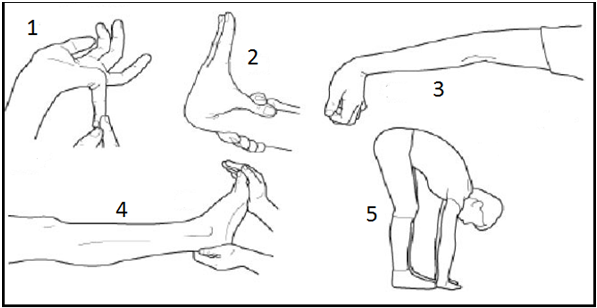
The results showed I had enough 'points' to be considered slightly hypermobile, but that is a bit misleading. One part of the test involved trying to touch your toes. This is something I am flexible enough to do but the pain from doing so is what limits me and so they took that into account. Based on my history, hypermobility, and symptoms, the geneticist clinically diagnosed me with EDS. This means based on what she saw it is her professional opinion that I have this disease. To be more confident with this diagnosis I was sent get blood tests. Even if she thought I had EDS, we wanted to figure out what kind of type it was. There are many types of EDS but the vast majority of sufferers are afflicted with three main types. These are the vascular, classical, and hypermobility types. The hypermobility type was the most painful of these but the least dangerous. It affects the joints the most and is the most common type. People with this version of EDS are typically very flexible.
The classical type mainly concerns one's skin, they have stretchy fragile skin that tears easily. The vascular type is the deadliest, for half of those who are afflicted by it are dead by their 40s. This is because it weakens your cardiovascular system including your heart and arteries. The tests I had done showed I had a gene that can be associated with the hypermobility type of EDS. While this was reassuring, (having the vascular type would mean I'd live a very short life) we still didn't have a definitive diagnosis. To remedy this, the geneticist referred me to a dermatologist. It was time for me to get a skin biopsy.
The skin biopsy entailed me lying on my stomach while they cut a small piece of skin off my lower back. They used local anesthesia so it didn't hurt much. A few weeks later I went back to hear the results. The doctor showed me microscopic images of my skin and these images demonstrated major deformities of much of my skin fibres, which are important for maintaining the strength of your skin. As a consequence of this my skin gets cut really easily, making tasks like shaving difficult. My skin fibres were deemed to be in the shape of cauliflower, which is a classic sign of having the hypermobility type of EDS. I had so many abnormally shaped fibres that the dermatologist considered it to be a definitive diagnosis, which is a very uncommon occurrence for the hypermobility type. Upon hearing this news I immediately broke into a huge grin. I finally caught what I've been chasing all these years: the truth. The truth is that I had the Hypermobility Type of EDS, an extremely painful and incurable disease. So while I may live a long life, it will also be a very painful one. This wasn't easy to accept but still, I finally knew.

No comments:
Post a Comment